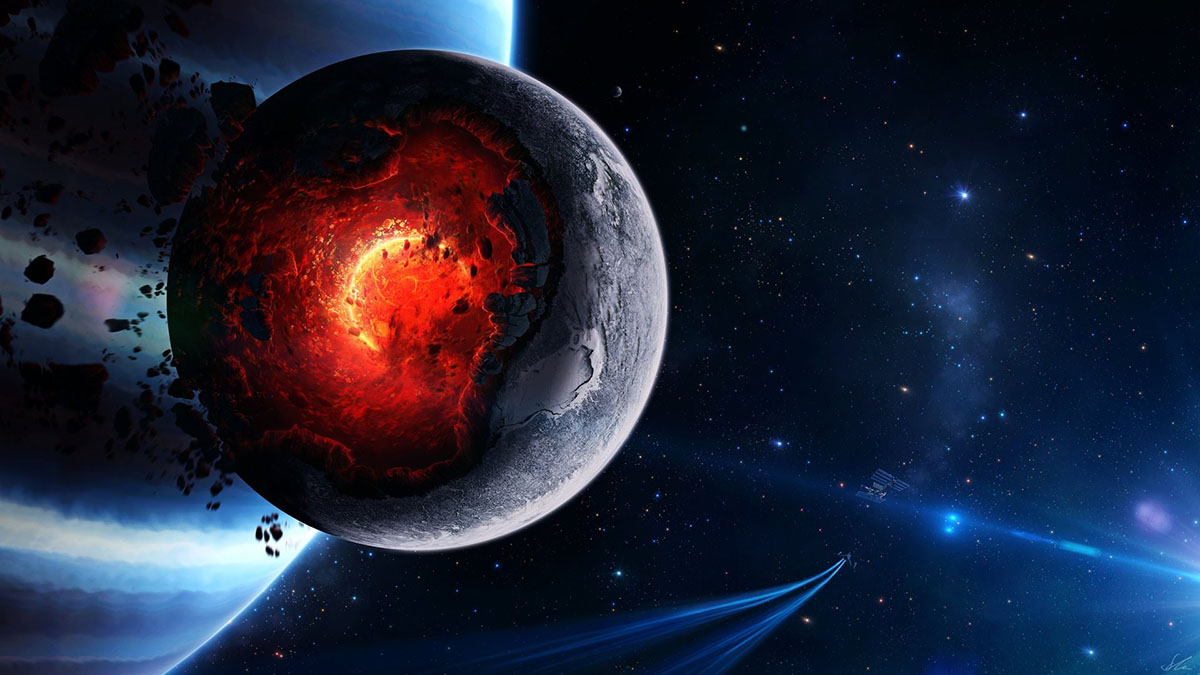astronomy abuse, now on national tv

Here’s a doomsday scenario. A chunk of a brown dwarf lodges itself in the lunar surface, increasing the mass of our natural satellite to twice that of Earth which sends it careening into our planet. No, wait, I’m not done yet, there’s more. To save the world, three scientists have to go to the Moon and dislodge the neutron star-dense piece of a celestial object with high explosives, the only sci-fi movie approved way to save worlds. The burning sensation you’re feeling is the several million degrees worth of stupid emanating from Tandem and ABC in a mini-series apparently written by someone who dropped out of eight grade. Just take a look for yourself…
Let’s start with the basics. Brown dwarfs are either overgrown planets or underachieving stars depending on whether you want to be optimistic or pessimistic about their fates. They emit light and there’s some sporadic fusion happening in their cores which means that they’re almost entirely gaseous, have no surface and their densest innards would probably be similar to soup in consistency. So, um, how exactly does one break off a large bit of a dense gas which weighs about 20 sextillion tons and make it so small, it can easily hide in the tiny rocks that make up a meteor shower? The only known objects in the universe with this much density are neutron stars which are basically just atomic nuclei kept from imploding only by the degeneracy pressure of the Pauli-exclusion principle. The only thing dense enough to possibly break off a chunk of a neutron star is another neutron star. And when neutron stars collide, you’ll just get a black hole because they’ll overcome the only force holding them from collapsing into a gravitational ghost.
Oh and there’s another problem with the mass of the object the writers crash into the Moon. If it has about two Earth masses, the scientists wouldn’t have noticed it by chance during a meteor shower. In fact there wouldn’t be a meteor shower as the object’s mass would’ve attracted the comet and the rocks it carried in its tail. As well as push the Earth out of its orbit on approach. Since it seems that even basic Newtonian gravity was too much of a hassle to take into consideration, the writers not only ignored that for eye-candy effects which could only happen if our planet was being swallowed by a black hole (and even then the explanations provided by the “scientists” would be wrong), they also sent the super-heavy Moon into a death spiral with the Earth. Even though if the Moon was twice as massive as we are, it would become the dominant object in the system and send us into a rapidly decaying orbit around itself.
At this point I could mention that trying to tear out 20 sextillion short tons of… whatever out of the Moon couldn’t be done with every nuclear weapon we’ve ever built going off at the same instant about a thousand times over. Or that we’d probably destroy the Moon in the process and send our planet tumbling through space as there’d be no force to help us keep our comfortable polar axis stable. But rather than expanding on these issues, I’m going to wonder who thought that such a ridiculously implausible show which would be rejected even by the companies which provide stilted, low budget B movies for the Sci-Fi Channel, was worth producing. If you’re going to write science fiction, you have to take into account that your audience probably knows a fair bit about space, how gravity works and understands the difference between a neutron star and a brown dwarf.
If you want to tell a good science fiction story, it has to be both plausible and respectful of the science involved in its mechanics. Otherwise, all you do is force viewers to mentally correct every other word that comes out of your characters’ mouths instead of following the storyline. I’ll bet that in the future, Impact may just become a punchline used to describe terrible science fiction movies written by someone who’s ignorance of the basics of astronomy could only be rivaled by the likes of Spike Psarris.





